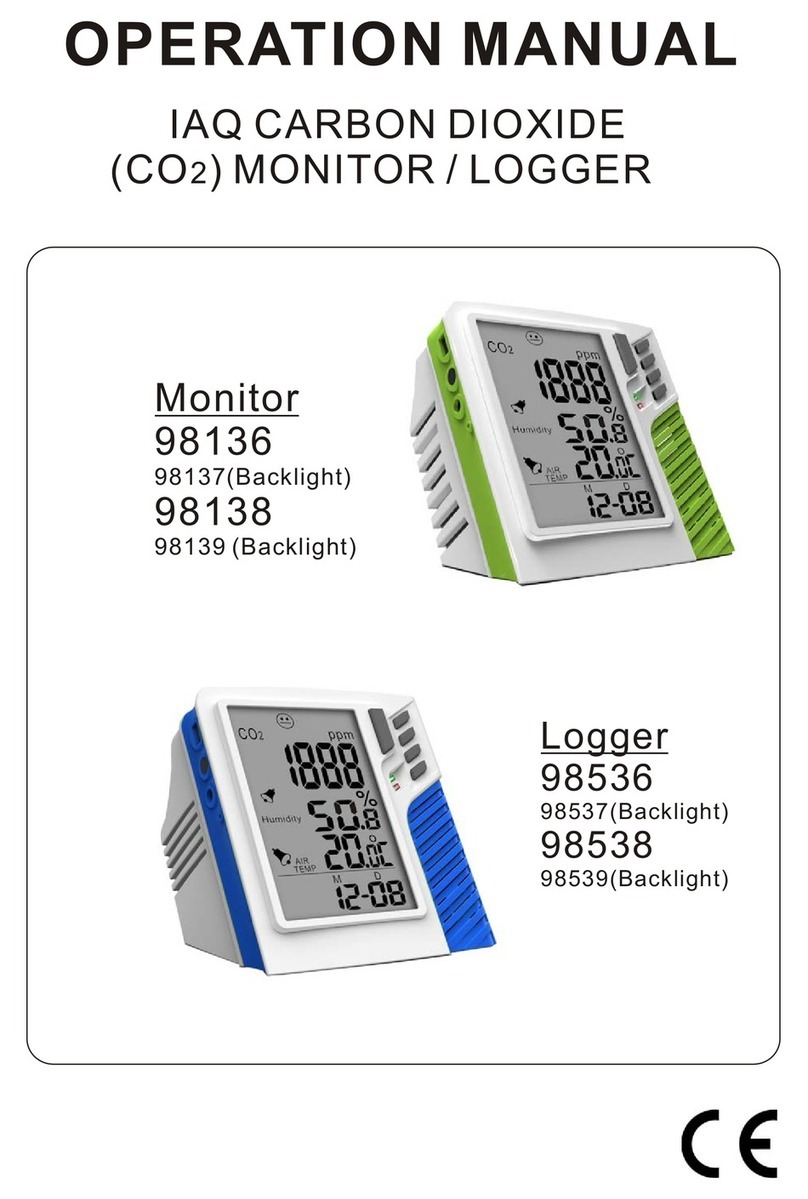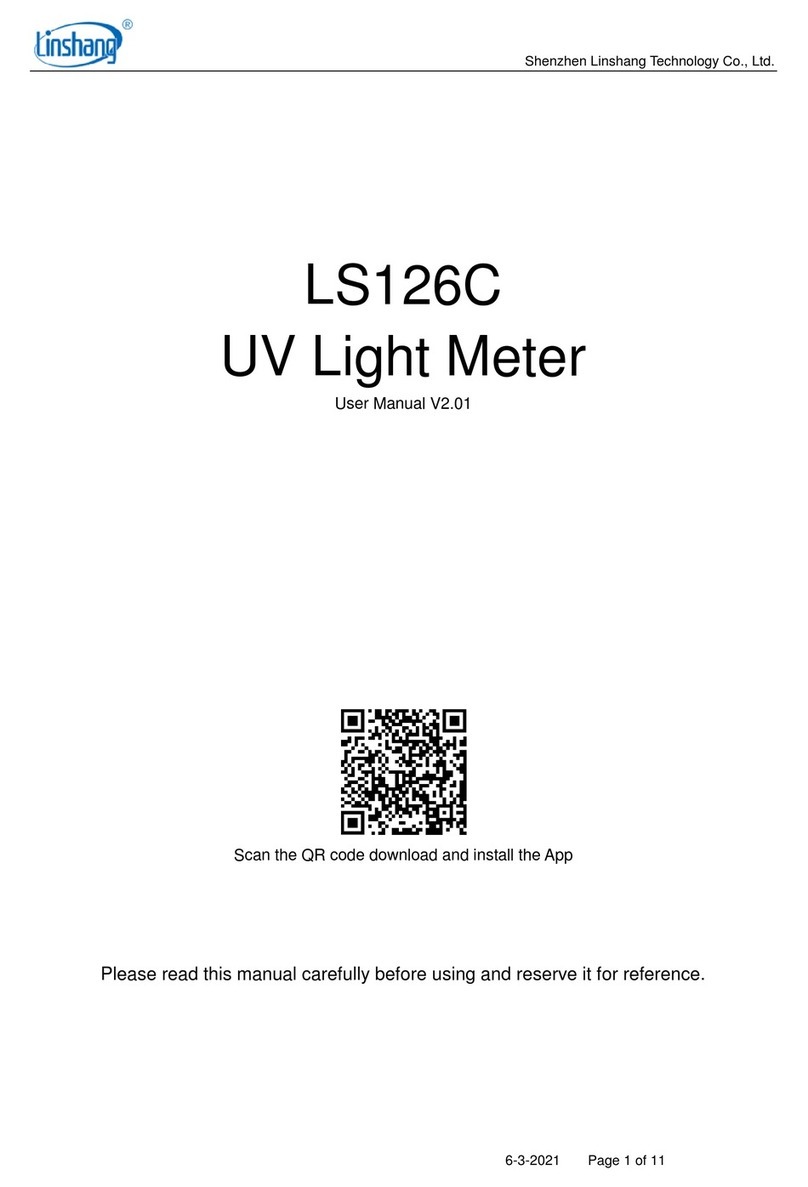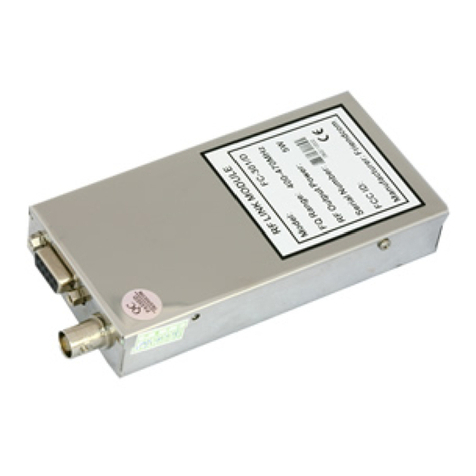Mic EC-912 User manual

Document type
Instruction Manual
Document no.
B-281-0006-00
Date
8 December 2020
force
FORCE Technology
Park Allé 345
2605 Brøndby
Danmark
+45 43 25 00 00
info@forcetechnology.dk
forcetechnology.com
forcetechnology.com
Instruction Manual for
Smoke Measuring Equipment
EC-912

Instruction Manual MIC type EC-912 Revision no.4 2 / 38
Table of Contents
General information................................................................................. 5
Introduction ..........................................................................................................5
General description..............................................................................................6
Applications..........................................................................................................6
Specifications.......................................................................................................7
System specifications...........................................................................................7
Measuring Ionization Chamber (MIC) type EC-912-10.........................................7
Analog MIC Control Unit (AMCU) type EC-912-20...............................................8
Intelligent MIC Control Unit (IMCU) type EC-912-25.............................................8
Flow Control Unit (FCU), type EC-912-40 ............................................................8
Vacuum Pump (VP), Thomas VTE 3, type EC-999-08 .........................................9
Installation.............................................................................................. 10
Preparation for use.............................................................................................10
Unpacking..........................................................................................................10
Mains cord .........................................................................................................10
Performance check using an Analog MIC Control Unit (AMCU) .........................11
Performance check using an Intelligent MIC Control Unit (IMCU).......................11
Installation of Measuring Ionization Chamber (MIC)...........................................13
Installation of Vacuum Pump (VP)......................................................................15
Installation of Control Cabinet (CC)....................................................................15
Operation................................................................................................ 16
Operating controls, connectors and indicators....................................................16
Measuring Ionization Chamber (MIC).................................................................16
Control Cabinet (CC)..........................................................................................16
Analog MIC Control Unit (AMCU).......................................................................16
Intelligent MIC Control Unit (IMCU)....................................................................17
Flow Control Unit (FCU).....................................................................................17
Vacuum Pump (VP)............................................................................................17
Smoke density measurements ...........................................................................18
Measuring set-up ...............................................................................................18
Measuring procedure with AMCU.......................................................................18
Theory of operation............................................................................... 20

Instruction Manual MIC type EC-912 Revision no.4 3 / 38
General working principle for ionization chambers for smoke density
measurements ...................................................................................................20
Measuring Ionization Chamber (MIC).................................................................21
Ionization chamber design..................................................................................21
Electronics for impedance transformation...........................................................22
Analog MIC Control Unit (AMCU).......................................................................23
Intelligent MIC Control Unit (IMCU)....................................................................24
Maintenance and service ...................................................................... 25
Periodic maintenance.........................................................................................25
Measuring Ionization Chamber (MIC).................................................................25
Analog and Intelligent MIC Control Unit (AMCU and IMCU)...............................27
Flow Control Unit (FCU).....................................................................................27
Vacuum Pump (VP)............................................................................................28
Periodical calibration of the MIC.........................................................................29
Possible errors and hints....................................................................................29
Flow system.......................................................................................................29
Electronics .........................................................................................................29
Electrical leakage...............................................................................................30
Spare parts ........................................................................................................30
FORCE Technology contact information ............................................................31
References ............................................................................................. 32

Instruction Manual MIC type EC-912 Revision no.4 4 / 38
List of symbols
I [A] current
U [V] voltage
R [Ω] resistance
[s] time constant
p [Pa] pressure
t [°C] temperature
h [%] relative humidity
List of subscripts and abbreviations
MIC Measuring Ionization Chamber
MIREX Measuring InfraRed EXtinction
FCU Flow Control Unit
AMCU Analog MIC Control Unit
IMCU Intelligent MIC Control Unit
CC Control Cabinet
VP Vacuum Pump
CAL Calibration
GND Ground
CH (C) Chamber
CHO Chamber, equilibrium
in (i) input
out (o) output
C.W. Clockwise
C.C.W. Counter clockwise

Instruction Manual MIC type EC-912 Revision no.4 5 / 38
General information
WARNING
THE MEASURING IONIZATION CHAMBER EC-912-10
CONTAINS A WEAK RADIOACTIVE SOURCE. DO NOT
ATTEMPT TO DISMOUNT THE MIC WITHOUT FOLLOWING
THE SAFETY PRECAUTIONS GIVEN IN SECTION 5.1.1 .
Introduction
Smoke density can be measured using several different techniques. However, for reference
measurements of smoke density in connection with testing of ionization smoke detectors for automatic
fire detection systems, it is advantageous to use a measuring instrument based on the ionization
chamber principle. This is because of the complex nature of smoke, which means that measuring
errors are likely to occur if the reference measuring instrument reacts to other properties of the smoke
than the detector under test.
Different reference ionization chambers have been developed in the past. See ref. [1][3][4]. However,
since the measuring characteristics of the ionization chamber depend on several parameters,
including the design of the ionization chamber, it is important to reach international acceptance of one
particular ionization chamber design in order that measuring results may be comparable in general.
The measuring ionization chamber (MIC) which is the smoke sensor in smoke measuring equipment
EC-912 has reached this status. The chamber, which is originally designed by Cerberus AG,
Switzerland [2][3], has been included in the European standards for smoke alarms EN14604 [5] and
smoke detectors EN54-7 [6] issued by CEN
1
and the UL
2
standards UL 217 and UL 268 [8][9].
Furthermore, the chamber is also specified in “ISO
3
7240-7 Fire detection and alarm systems” for point
smoke detectors.
The MIC instrument can be used alone or in combination with different types of optical smoke
measuring equipment.
1
CEN: European Committee for Standardization
2
UL: Underwriters Laboratories Inc.
3
ISO: International Organization for Standardization

Instruction Manual MIC type EC-912 Revision no.4 6 / 38
General description
The smoke measuring equipment EC-912 comprises a measuring ionization chamber, a control
cabinet and a vacuum pump as shown in Fig. A.1.1 in Annex 1.
The 19” control cabinet (CC) comprises either an Analog MIC Control Unit (AMCU) or an Intelligent
MIC Control Unit (IMCU) for the measuring ionization chamber, a flow control unit and a power supply.
The measuring ionization chamber (MIC) is placed in the location where the smoke density is to be
measured. The MIC is provided with a wind shield which makes the measurements of the device
independent of air movement in the location where it is mounted. This wind shield, however, makes it
difficult for the smoky air to merge into the measuring volume, so air is sucked through the MIC by a
vacuum pump (VP).
The air passes the flow control unit (FCU) on its way from the MIC to the VP. In the FCU the air can be
set to a flow rate with needle valve. An exchangeable filter is inserted before the flow meter in order to
reduce smoke deposits in this instrument.
The current in the MIC, which is proportional to the smoke density, can be measured with either an
Analog MIC control unit (AMCU) or an Intelligent MIC Control Unit (IMCU). The current in the MIC is
transformed into a proportional voltage in a built-in amplifier in the MIC. This voltage is fed to the MCU
and transformed to an expression for smoke density which can be presented on the display of the
AMCU. Furthermore, a recorder output is provided. The AMCU is provided with an electrical
calibration facility for check and setting of zero point and full scale deflection of the measuring system.
The IMCU gives you full control of the MIC via a standard Ethernet connection and can directly
replace the Analog MIC Control Unit placed in the 19” control rack without any modifications to the
existing hardware or cabling.
Applications
As mentioned in the introduction, the MIC smoke measuring equipment EC-912 is intended for
reference measurements of smoke density in type approval tests of smoke detectors. The following
two applications are typical in this area:
a) Smoke tunnel (box) measurements.
The smoke measuring equipment is used to measure the actual smoke density in the
smoke tunnel where the detector under test is subjected to a slowly increasing smoke
density. The sensitivity of the detector is expressed in terms of the value of smoke
density measured at the moment of response. The detector sensitivity under specific
reference conditions and the change in sensitivity due to variations in the operating
parameters environment etc., are measured in this way.
b) Measurements during fire sensitivity tests.
The smoke measuring equipment is used to measure the smoke density under the
ceiling in the fire test laboratory, where the detectors under test are subjected to
different test fire categories. The smoke readings are used for determining if the test
fires are correctly reproduced.

Instruction Manual MIC type EC-912 Revision no.4 7 / 38
The smoke measuring equipment can also be used in other applications, where
measurements of smoke density are needed.
Specifications
System specifications
Measuring accuracy: The overall measuring accuracy of the whole system is limited by the
measuring accuracy of the MIC, which is better than ±4% of full scale
reading (X = 1) for 0 X < 0.9.
Mains supply: 115 to 230 Vrms, 50 to 60 Hz without switch-over. Power consumption
max. 120 W independent of the applied voltage. Mains supply for vacuum
pump, see Section 1.4.5.
Cabinet: 19 inch desktop/subrack cabinet with power supply for MIC.
The control cabinet and the vacuum pump are intended for operation in normal laboratory
environment. However, the measuring ionization chamber may be applied in the temperature range 0-
100°C.
Measuring Ionization Chamber (MIC) type EC-912-10
General: The MIC is designed to fulfil the specification in EN54-7 and EN14604.
See Ref. [5][6].
Radioactive source:
Isotope: Am 241
Activity: 129.5 kBq (3.5 µCi) ±5%
Average -energy: 4.5 M eV ±5%
Mechanical construction: Americium oxide embedded in gold between two layers of gold. Covered
with a hard gold alloy. The source is in the form of a circular disc ø = 27
mm, which is mounted in a holder in such a way that no open cut edges
are accessible.
Ionization chamber:
Chamber quiescent current: ICHO = 100 pA
Chamber impedance: RCHO = 1.9 •1011 ±5%
The characteristics are measured in aerosol free air at:
Air pressure: p =1.013 •105Pa (760 mm Hg)
Air temperature: t = 25°C
Rel. humidity: h = 48%

Instruction Manual MIC type EC-912 Revision no.4 8 / 38
Measuring time delay 10 sec. where is defined as the time from the moment when the MIC is
subjected to a smoke step function to the moment when the output has reached 63% of its final value.
The figure for is based on a flow rate of 30 l/min.
Relative smoke sensitivity:
MICX X
R
= 1.00 ±3%,
where XRMIC is the smoke density measured with FORCE Technologies world reference standard
chamber MIC, type EC 23095-1 Serial no. 830101.
Refer to Section 5.2 and the certificate of calibration for further details.
Output: Multipole connector for the cable to the CC.
Analog MIC Control Unit (AMCU) type EC-912-20
Readout: 3.1 digit LCD display. Chamber voltage or smoke density X can be
selected.
Recorder output X: 0.0 to 10.0 VDC corresponding to a smoke density X of 0.00 to 1.00.
Recorder output Uc: Approx. 14 to 25 VDC corresponding to the chamber voltage.
Intelligent MIC Control Unit (IMCU) type EC-912-25
Readout on front panel: 1 pc. LED “Power” The color of the LED is green under normal operation,
red during power up and flashing red in case an error is detected.
1 pc. LED “Calibrating” The color of the LED is green under normal
operation, red during calibration and flashing red in case an error is
detected.
1 pc. LED “Link” The color of the LED is yellow when connected and
flashing yellow when there is activity on the Ethernet.
1 pc. Ethernet interface via RJ45 connector
1 pc. USB web interface / service port
Recorder output X: 0.0 to 10.0 VDC corresponding to a smoke density X of 0.00 to 1.00.
Recorder output Uc: Approx. 14 to 25 VDC corresponding to the chamber voltage.
For further information about the IMCU please refer to the separate IMCU-manual.
Flow Control Unit (FCU), type EC-912-40
Flow rate: Adjustable between 0-50 1/min
Filter: Replaceable filter element: type EC999-01.

Instruction Manual MIC type EC-912 Revision no.4 9 / 38
Vacuum Pump (VP), Thomas VTE 3, type EC-999-08
Technical data:
Mains voltage: 230 V ±10%, 50-60 Hz
115 V ±10%, 60 Hz
100 V ±10%, 50-60 Hz
Motor rating: Approx. 0.15 kW
Capacity: 3.5 m3/h 58 l/min, 50 Hz
4.2 m3/h 70 l/min, 60 Hz
Degree of protection: IP54
Weight: 6.5 kg
l xw xh 209 x152 x165
4
mm
4
To top of pipe branches

Instruction Manual MIC type EC-912 Revision no.4 10 / 38
Installation
Preparation for use
Unpacking
Unpack the smoke measuring equipment and remove tape strips etc. used for fixing during
transportation.
Check that the following items are enclosed in the shipment:
1 Measuring Ionization Chamber, type EC-912-10
1 Allen wrench, 1.5 mm metric
1 P.V.C. hose (in the ordered length)
1 Multicable (in the ordered length)
1 Control Cabinet with Analog MIC Control Unit, type EC-912-20 or Intelligent MIC
Control Unit, type EC-912-25) and Flow Control Unit, type EC-912-40.
1 Mains cord with plug.
1 Vacuum pump
1 Instruction manual in USB-stick
1 Certificate of calibration of the MIC chamber
Inspect the items for possible damage due to transportation and report to the forwarding agency as
soon as possible if damages are found.
Check for correct voltage rating of the vacuum pump (VP).
Mains cord
Plugs corresponding to the type of electrical outlet in concern have to be mounted on the mains cord
to the control cabinet and vacuum pump in accordance with the following information:
Control cabinet: 3-wire mains cord:
Brown - live
Blue - neutral
Green/yellow - ground (chassis)
Vacuum pump: 3-wire mains cord:
See connection information on the lid of the terminal housing
Consult an electrician for proper mains installation.
Note: The MIC must be earthed through the mains connection (green/yellow wire).

Instruction Manual MIC type EC-912 Revision no.4 11 / 38
Performance check using an Analog MIC Control Unit (AMCU)
Check the performance of the smoke measuring equipment as follows:
a) Interconnect the MIC and the Control Cabinet (CC) with the multicable, the MIC
connectors have yellow insulation rings. Align the code marks and push the plug gently into the
connector when fitting the cable.
b) Connect a voltmeter (range 0-10 VDC) to recorder output X on the rear of the CC.
c) Connect the CC to the mains and switch on power. The AMCU display shall light up, the MODE
indicator shall indicate Uc mode and the CAL ON indicator shall light up.
d) Press the AMCU MODE button to indicate mode X. The AMCU display may read a value
deviating from 1.00.
e) Adjust the offset trimmer on the AMCU until the display reads 1.00. The corresponding recorder
output voltage shall be 10.0 VDC.
f) Press the AMCU CAL button. The CAL ON indicator shall extinguish. The display may read a
value deviating from 0.00.
g) Adjust the Uc trimmer on the AMCU until the display reads 0.00. The corresponding recorder
output voltage shall be 0.0 V.
h) Press the AMCU MODE button to indicate mode Uc. The display shall read a value between
14.0 and 25.0 (19.0 is typical). The voltage on recorder output Uc at the rear of the MCU shall
be the same as the value on the display.
i) Connect the Vacuum Pump (VP) and air outlet on the rear of the Flow Control Unit (FCU) with a
piece of hose.
j) Turn the flow meter needle valve in the FCU fully C.W.
k) Connect the VP to the mains and switch on power. The ball in the flow meter on the FCU shall
stay in its lowest position.
l) Turn the flow meter needle valve C.C.W. until the middle point of the ball
indicates approx. 30 1/min. Block the air inlet on the rear panel of the FCU with a finger and
control that the ball drops to its lowest position. Fasten the finger screws on the filter unit and
checks for leaks if this does not happen.
Attention: Do not remove your finger from the air inlet before the VP has been switched off and
stopped. Otherwise, the ball may be damaged by collision with the flow meter needle
valve.
Performance check using an Intelligent MIC Control Unit (IMCU)
Check the performance of the smoke measuring equipment as follows:
a) Interconnect the MIC and the Control Cabinet (CC) with the multicable, the MIC connectors
have yellow insulation rings. Align the code marks and push the plug gently into the connector
when fitting the cable.

Instruction Manual MIC type EC-912 Revision no.4 12 / 38
b) Interconnect a PC and the IMCU with a RJ45 LAN cable or USB cable.
c) From a Web browser enter the MIC Webpage by selecting the address 172.16.99.100.
OBS You might need to force your PC to scan the IP range from IP 172.16.99.50 (in network
preferences TCP/IPV4).
The following web-page appears:
d) The calibration is initiated by pressing the Start button. The LED “Calibrate” on the IMCU turns
ON.
The Calibrate button should only be pressed, when the Measuring Ionization Chamber, MIC, is
known to contain clean aerosol free air.
When the calibration is done and the MIC system is ready for normal operation, the Last
Calibrated time stamp is updated.
i) Connect the vacuum pump (VP) and air outlet on the rear of the Flow Control Unit (FCU) with a
piece of hose.
j) Turn the flow meter needle valve in the FCU fully C.W.
k) Connect the VP to the mains and switch on power. The ball in the flow meter on the FCU shall
stay in its lowest position.
l) Turn the flow meter needle valve C.C.W. until the middle point of the ball
indicates approx. 30 1/min. Block the air inlet on the rear panel of the FCU with a finger and
control that the ball drops to its lowest position. Fasten the finger screws on the filter unit and
checks for leaks if this does not happen.

Instruction Manual MIC type EC-912 Revision no.4 13 / 38
Attention: Do not remove your finger from the air inlet before the VP has been switched off and
stopped. Otherwise, the ball may be damaged by collision with the flow meter needle
valve.
Installation of Measuring Ionization Chamber (MIC)
The MIC is intended for mounting on a plane surface (e.g. wall, ceiling, etc.) in the location in concern,
as shown in Fig 2.2. A circular opening in the mounting surface 10-12 cm in diameter is adequate
Keep a distance of min. 12 cm to objects behind the mounting surface in order to prevent the cable
and hosing from being bent sharply.
The MIC should not be mounted too close to devices which may be sensitive to air movements since
the air flow through the MIC causes slight disturbances in the surrounding air. The nominal flow rate of
30 l/min. corresponds to a mean air velocity of approx. 4 cm/sec. near to the air entrance openings in
the chamber housing. Since the air velocity decreases rapidly with the distance from the entrance
openings, a spacing of 10 cm or more between the MIC and other devices is usually sufficient.
Fig. 2.2 Mounting of MIC

Instruction Manual MIC type EC-912 Revision no.4 14 / 38
MIC chamber mounting holes
152mm
4,5mm
Fig. 2.3 MIC chamber mounting holes

Instruction Manual MIC type EC-912 Revision no.4 15 / 38
Installation of Vacuum Pump (VP)
The smoke measuring equipment EC-912 is delivered with a vane-type vacuum pump
Thomas type VTE 3. The VTE 3 pump is quiet in operation (noise level 58 dBA with exhaust hose).
The pump is provided with a factory-set bypass valve, which prevents damage in case the inlet is
blocked. An outlet is provided, from where the smoky air can be led to the outside via a hose. So, the
VTE 3 pump can be placed in a suitable place in the laboratory.
Refer to the installation instructions from Thomas in: Pump spec. 2012 BA187-EN.
Installation of Control Cabinet (CC)
The CC is housed in a 19 inch cabinet which can be used as a desktop cabinet or as a subrack for
mounting in a 19 inch rack system. The CC is delivered as a desktop cabinet with a bottom plate with
four feet. If the CC is to be installed in a 19 inch rack system the whole bottom plate has to be
removed, by unscrewing the four screws in the bottom plate.

Instruction Manual MIC type EC-912 Revision no.4 16 / 38
Operation
Operating controls, connectors and indicators
The function of the controls, connectors and indicators located on the different units of smoke
measuring equipment EC-912 is defined as follows:
Measuring Ionization Chamber (MIC)
Multipole connector: The male connector of the multicable fits into this connector. Align the code
marks and push the plug gently into the connector. Do not use force. When
disconnecting the cable, be sure to pull on the fluted part of the connector and
never on the cable.
Air outlet: Pipe branch for hose to air inlet on rear of FCU.
Control Cabinet (CC)
Rear plate (see Fig. A.1.4 in Annex 1)
Mains switch: The mains switch is part of the EMI filter and is placed on the left side of the
rear part of the cabinet.
Connector MIC: The female plug of the multicable fits into this connector. Align the code marks
and push the plug gently into the connector. Do not use force. The plug on the
cable is secured with a locking system which avoids unwanted disconnecting.
When disconnecting the cable, be sure to pull on the fluted part of the
connector and never on the cable.
Sockets Uc: The actual chamber voltage Ucis present on these sockets.
Black: Ground Red: Output voltage
14.0 VDC Uc 25.0 VDC
Load impedance 100 k
Sockets X: A voltage which is proportional to the measured X signal is present on these
sockets.
Black: Ground Red: Output voltage
0.0 VDC for X = 0.00
10.0 VDC for X = 1.00
Load impedance 100 k
Analog MIC Control Unit (AMCU)
Front panel (see Fig. A.1.3 in Annex 1)
MODE button: With this button unit chamber voltage Ucand smoke or density X can be
selected.
CAL button: When the button is pressed indicator ON light up and the MIC is now ready for
offset calibration by means of the offset trimmer.

Instruction Manual MIC type EC-912 Revision no.4 17 / 38
Offset trimmer: Screwdriver trimmer for offset calibration.
Uctrimmer: Screwdriver trimmer for adjustment of the chamber CAL voltage.
Intelligent MIC Control Unit (IMCU)
Front panel (see Fig. A.1.5 in Annex 1). See also the separate IMCU user manual.
Flow Control Unit (FCU)
Front panel (see Fig. A.1.3 in Annex 1)
Flow meter valve: Needle valve for adjustment of air flow rate in the range 0-50 l/min. The flow
rate is indicated on the flow meter and read at the middle of the ball.
Rear panel (see Fig. A.1.4 in Annex 1)
Air inlet: Pipe branch for hose to air outlet on MIC.
Air outlet: Pipe branch for hose to air inlet on VP.
Finger screws: Screws for disassembling the filter unit.
Vacuum Pump (VP)
Air inlet: Pipe branch for hose to air outlet on rear of FCU.
Air outlet: Pipe branch for hose to appropriate place.
Bypass valve: Valve for adjustment of minimum pressure. The bypass valve is fitted to
ensure that the pressure does not drop below 150 mbar, when the inlet is
blocked. Before delivery of a new vacuum pump from FORCE Technology,
the bypass valve is adjusted to a minimum pressure of approx. 500 mbar. This
setting is locked with lacquer and should not be changed.

Instruction Manual MIC type EC-912 Revision no.4 18 / 38
Smoke density measurements
Measuring set-up
Fig. 3.2.1 Measuring set-up principle
Connections:
a) Air hose between air outlet on MIC and air inlet on FCU.
b) Air hose between air outlet on FCU and air inlet on VP.
c) Multicable between MIC and the MIC connector on the rear of the CC.
d) Cable to recorder from outputs at the rear of the CC (if used).
e) Mains cord for VP and CC.
Measuring procedure with AMCU
a) Turn the flow meter needle valve in the FCU fully C.W.
b) Switch on the mains to the VP and turn the needle valve on the FCU slowly C.C.W. until
the flow meter reads 30 l/min. Rate of flow is read at the middle point of the ball.
c) Switch on the mains on the control cabinet and allow the instrument to stabilise for at
least 15 min.
d) Press the MODE button on the AMCU to indicate mode X.

Instruction Manual MIC type EC-912 Revision no.4 19 / 38
e) Press the CAL button on the AMCU (CAL ON indicator lights up) and adjust the offset
trimmer until the display reads 1.00 or the recorder output X is 10.0 VDC.
f) Press the CAL button again (CAL ON indicator extinguish) and adjust the Uc trimmer on
the AMCU until the display reads 0.00 or the recorder output X is 0.0 VDC.
g) Subject the MIC to the smoke exposure the density of which shall be measured.
h) Subject the MIC to aerosol-free air and repeat point e) and f) before the next smoke
density measurement. Also check the rate of air flow, point b).
For measuring procedure when using an Intelligent MIC Control Unit please refer to the separate
IMCU user manual.

Instruction Manual MIC type EC-912 Revision no.4 20 / 38
Theory of operation
General working principle for ionization chambers for smoke
density measurements
The use of ionization chambers as smoke sensors is well known and the associated theory outlined in
the literature.
The working principle for the ionization chamber for smoke density measurements is shown in Fig. 4.1.
Fig. 4.1 Working principle for ionization chamber
The chamber consists of a pair of electrodes between which a volume of atmospheric air is present.
The electrodes are connected to a voltage source UCH so an electrical field E is applied to the air.
Radioactive radiation from a small radioactive source bombards the air and ion pairs are created
between the electrodes. The positive and negative air molecules forming the ion pairs are deflected
towards the negative and positive electrode, respectively. Some of the ions recombine before they
reach the electrode surfaces and become neutral air molecules. Other ions exchange electrons with
the electrode surfaces. This electron exchange results in a small electrical current ICH in the external
circuit.
When the air between the electrodes is clean, the ions formed move to the electrode with a certain
mean velocity and each ion which does not recombine in the volume contributes to the current.
However, if smoke particles penetrate the volume between the electrodes, the ions and the smoke
particles will be attached to each other with a certain probability. Since the smoke particles are much
heavier than the ions, the mobility of ions attached to smoke particles is greatly reduced and the
probability for recombination increased. So, their contribution to the external current becomes
negligible. Thus the external current is a function of the smoke particle density in the measuring
volume.
Table of contents
Other Mic Measuring Instrument manuals
Popular Measuring Instrument manuals by other brands
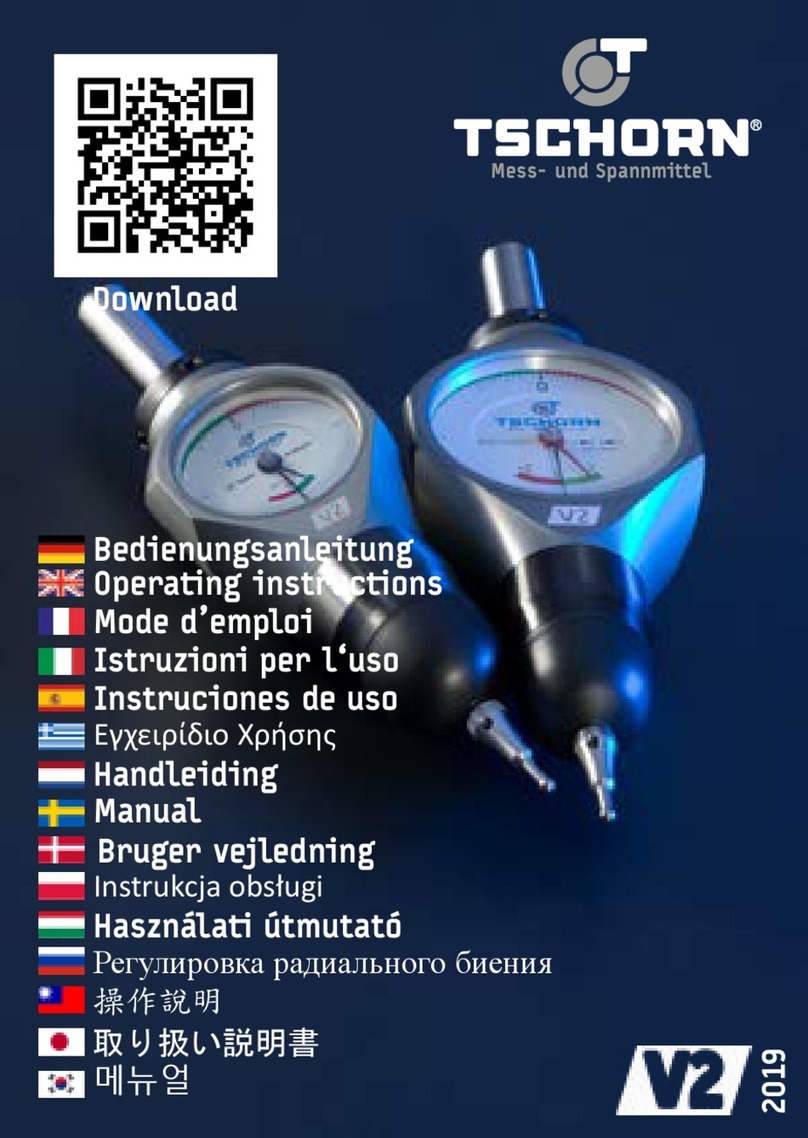
TSCHORN
TSCHORN 3D-Tester operating instructions
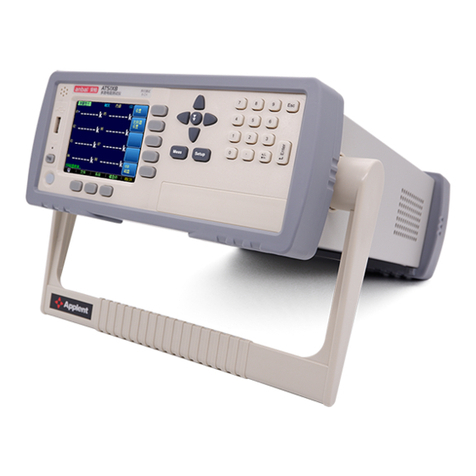
Applent Instruments
Applent Instruments AT5108 user guide
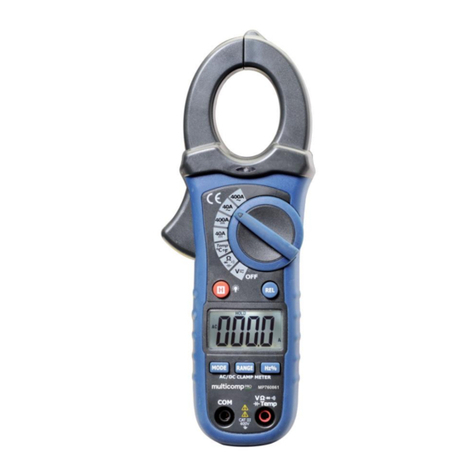
multicomp pro
multicomp pro MP760861 quick start guide
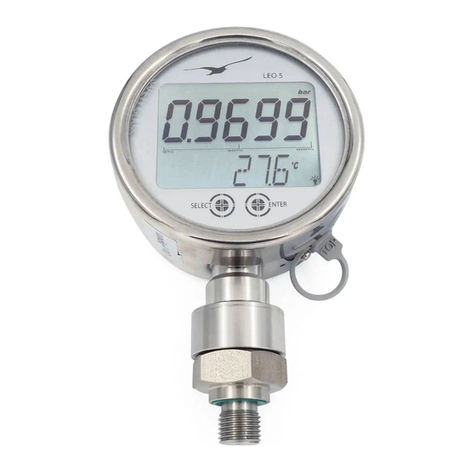
Keller
Keller LEO 5 operating instructions

LOVATO ELECTRIC
LOVATO ELECTRIC DMG900 instruction manual

Neptune Systems
Neptune Systems PAR Monitoring kit Setup guide
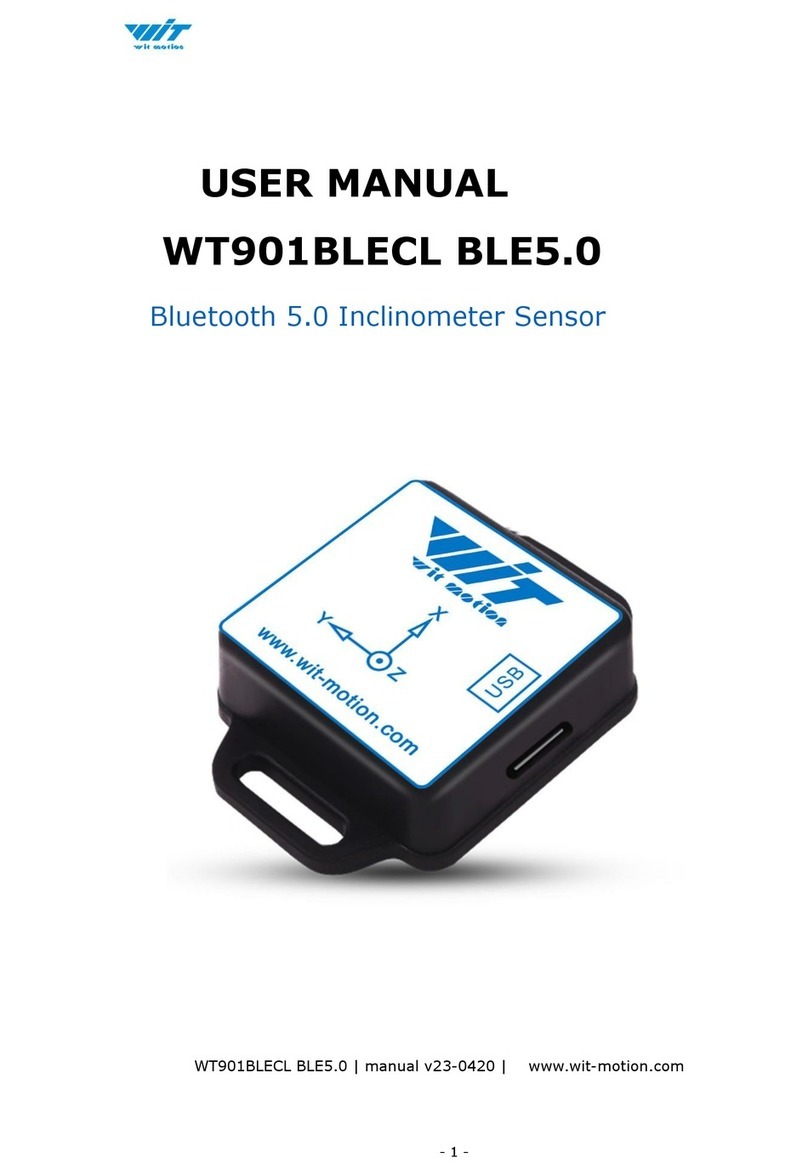
WiT
WiT WT901BLECL user manual

MED Associates
MED Associates ENV-421 user manual
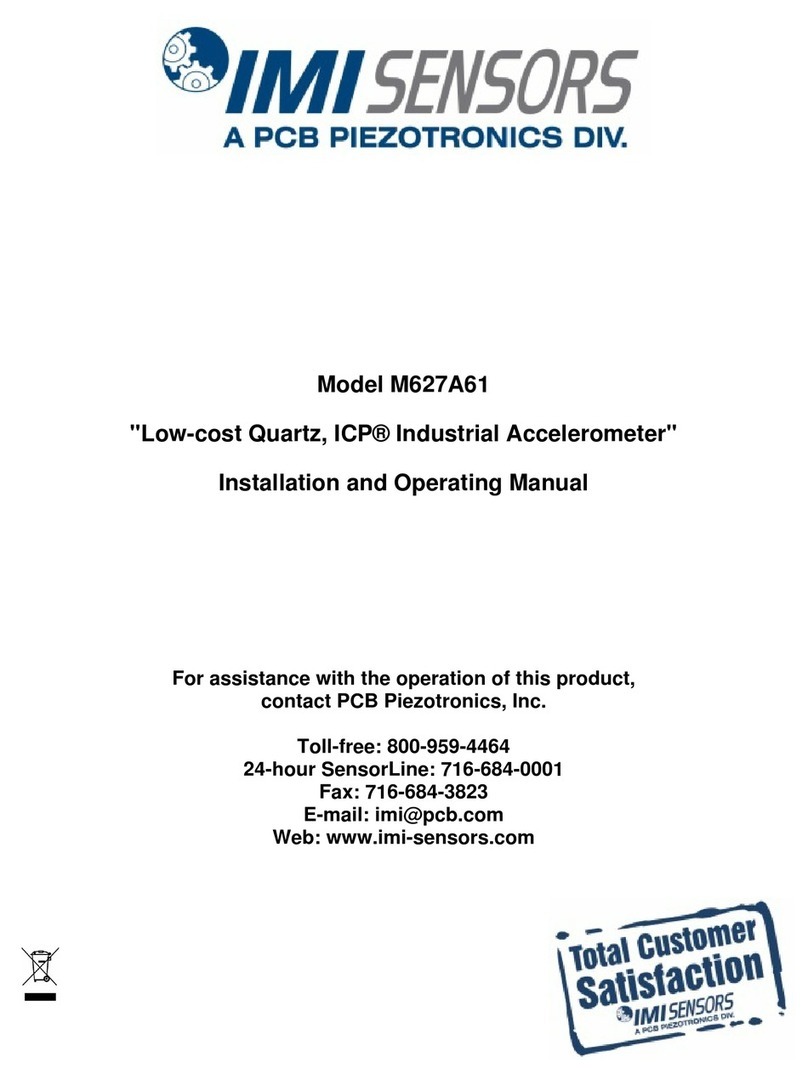
PCB Piezotronics
PCB Piezotronics IMI SENSORS M627A61 Installation and operating manual
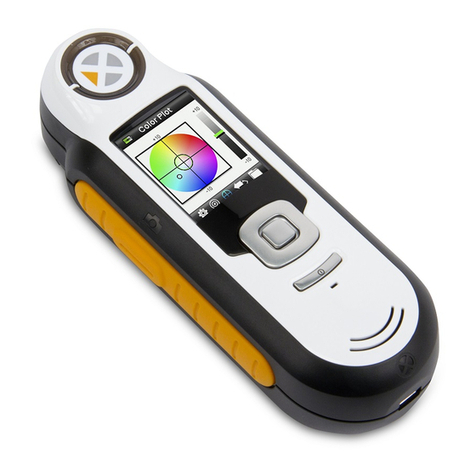
X-Rite
X-Rite RM200QC user manual
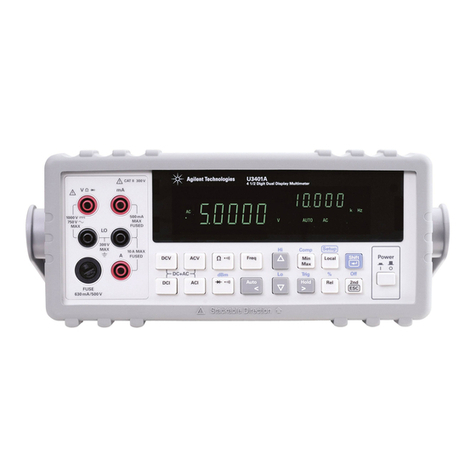
Agilent Technologies
Agilent Technologies U3401A User's and service guide
Inficon
Inficon Gemini MAG500 operating manual



